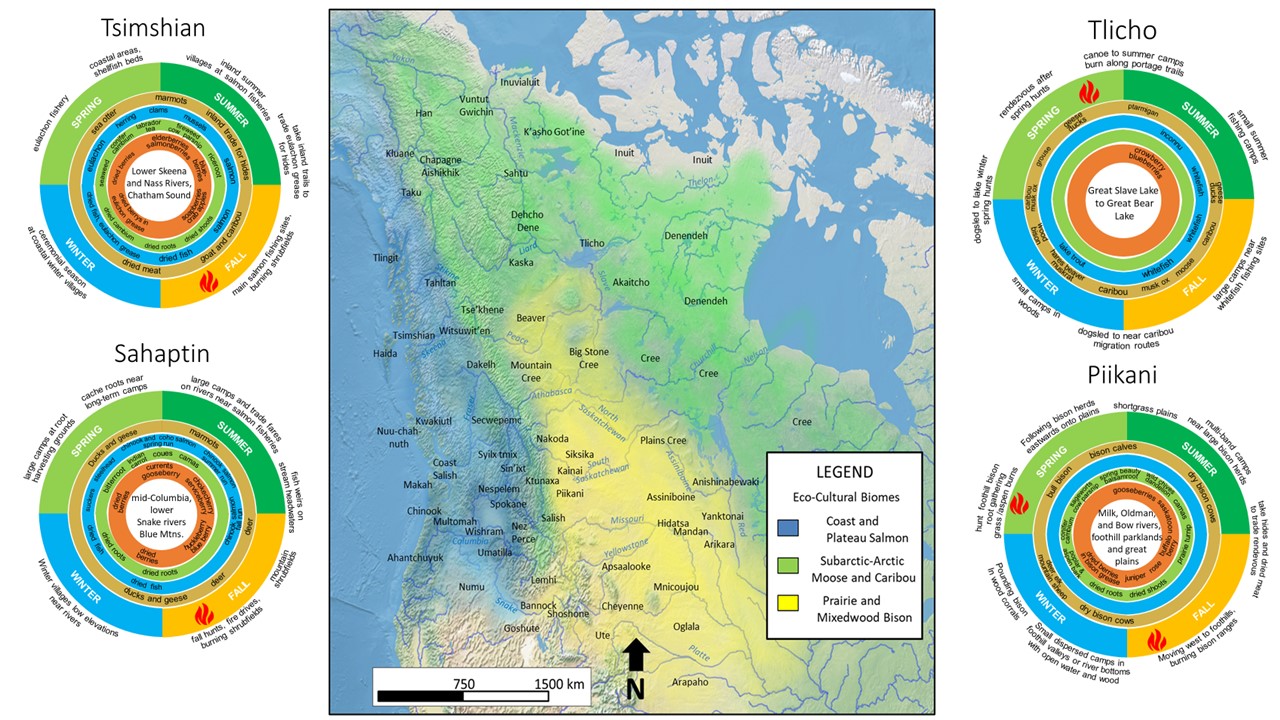Report Summary:
Indigenous peoples hypothetically could influence long-term regional ecosystems through 1) niche
construction by fire to create habitat for resources (plants, animals, and fish) and 2) optimal foraging
that alters resource abundance, particularly for favored prey species. The northwest region (NW) of
North America provides an excellent study area to evaluate changes in these potential human influences
due to the relatively recent colonization by Eurasians. This study reviews indigenous people’s seasonal
rounds for eco-cultural biomes and describes current ecoregion mapping. Databases of fire frequency
studies and historical journal accounts compiled at the ecoregion scale are then used to provide
evidence that humans, through hunting, gathering, and culturing, were the keystone species that
structured the food webs of eco-cultural biomes. Recent global-scale human population and
technological growth are causing a rapid transition of these long-term biomes to “anthromes”, a set of
globally standard land use types of various levels of urbanization, agriculture, and forestry. These altered
human ecosystem management practices are resulting in major changes in fire regimes and species
abundance. However, broad areas of the Pacific Northwest remain in relatively “natural” condition and
may be managed for ecosystem conservation. Indigenous people’s potential long-term keystone role
should be understood, and possibly maintained or restored to conserve these landscapes.
